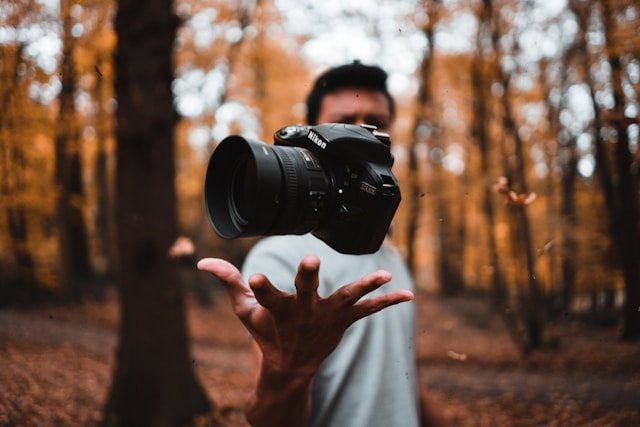Keyword: Camera Cleaning and Maintenance
Keeping your camera gear in pristine condition is crucial for producing high-quality images and extending the longevity of your equipment. Regular maintenance ensures that each part of your camera is functioning optimally and can save you from costly repairs or replacements. Whether you’re a beginner or a seasoned photographer, these cleaning tips will help you care for your camera gear effectively.
Why Camera Maintenance Matters
Over time, dust, moisture, and fingerprints can accumulate on your camera’s lens and body, affecting image quality and potentially damaging delicate parts. Regular cleaning not only helps maintain the aesthetic of your camera but also plays a role in protecting its performance. According to experts, “Keeping your camera clean is as important as understanding how to use it” (PhotographyLife, 2024). The investment of time and minimal costs for maintenance is worthwhile for preserving your equipment.
Essential Cleaning Tools
To begin, it’s essential to have a few basic cleaning supplies on hand. Here’s a list of recommended tools and their functions:
- Lens Blower: A lens blower is an inexpensive yet effective tool for removing dust and small particles from the camera lens and sensor. By using a gentle air stream, you can clear away dust without touching sensitive surfaces, reducing the risk of scratches.
- Microfiber Cloth: A high-quality microfiber cloth is essential for cleaning lenses and LCD screens. Avoid using tissues or paper towels, as they can leave tiny scratches on the glass surfaces. Always keep your microfiber cloth clean and dry to ensure it doesn’t pick up any debris that could scratch the lens.
- Lens Cleaning Solution: For more thorough cleaning, a dedicated lens cleaning solution is helpful. A few drops on the microfiber cloth (never directly on the lens) can help remove stubborn smudges or fingerprints without leaving streaks. Most cleaning solutions are formulated specifically for camera lenses to avoid residue.
- Sensor Cleaning Kit: If you’re experienced, you might consider cleaning your camera’s sensor. Sensor cleaning kits usually include swabs and cleaning fluid that are safe for the sensitive sensor surface. However, for most users, this process is best left to professionals, as sensors are delicate and easy to damage.
- Cleaning Brushes: Soft, anti-static brushes are ideal for gently sweeping away dust from hard-to-reach places on the camera body. Some photographers recommend using retractable brushes, which are easier to store and help prevent dirt accumulation on the bristles.
Cleaning the Camera Body
The camera body is often overlooked, yet it can gather dust, dirt, and even small particles of sand or grit over time. Here’s a simple routine for keeping your camera body clean:
- Remove Dust and Particles: Start by using a blower to remove any loose dust or particles from the camera body, especially around buttons, dials, and crevices.
- Wipe Down the Surface: Use a lightly dampened microfiber cloth to wipe down the camera’s exterior. Be careful not to let moisture seep into any of the buttons or ports. Avoid harsh chemicals, as they can damage the finish.
- Check Lens Mount and Sensor Areas: Dust can settle around the lens mount area, so keep this spot clean with an anti-static brush or blower. If you notice any dirt on the sensor, consult a professional or use a designated sensor cleaning kit.
Lens Care: Keeping It Clear and Scratch-Free
A camera lens is one of the most valuable components of your setup. Since lenses are highly susceptible to fingerprints and dust, regular cleaning is essential. Here’s how to maintain your lenses:
- Use a Lens Cap: When not in use, always keep the lens cap on to avoid exposure to dust and scratches. A simple step, but one that extends the lens’s lifespan significantly (National Geographic, 2024).
- Remove Dust with a Blower: Start with a blower to clear away any dust on the lens. Avoid blowing directly with your mouth, as saliva particles can land on the lens and cause smudges.
- Wipe Gently with a Microfiber Cloth: Apply a small amount of lens cleaning solution to the cloth, and gently wipe the lens in a circular motion, starting from the center and moving outward.
Storage and Environmental Precautions
Proper storage is also a critical part of camera maintenance. Exposure to excessive moisture, heat, and direct sunlight can lead to significant damage over time.
- Use a Camera Bag: Store your camera and lenses in a protective, padded camera bag. This reduces the risk of accidental drops and keeps dust away. Look for bags with compartments for added organization and safety.
- Consider a Silica Gel Pack: Humidity can cause fungus to grow inside your lenses, which is difficult to remove and can permanently damage your equipment. Placing silica gel packs in your camera bag absorbs excess moisture, particularly in humid climates (Digital Trends, 2024).
- Avoid Extreme Temperatures: Rapid temperature changes can lead to condensation forming inside the camera, especially on the sensor and lens. If you’re moving from a cold environment to a warm one, allow the camera to adjust to the new temperature gradually before use.
Professional Cleaning: When and Why It’s Needed
Even with diligent at-home maintenance, professional cleaning is recommended once or twice a year. Professional technicians can perform deep cleans, particularly for parts like the sensor, which are difficult to clean without the right tools and expertise. Many camera brands and retailers offer cleaning services that include sensor checks and lubrication for moving parts.
Conclusion
Regular camera cleaning and maintenance are essential for preserving image quality and extending the lifespan of your equipment. With the right tools and techniques, you can handle most cleaning tasks at home, ensuring your gear stays in peak condition for every shoot. Remember, a clean camera doesn’t just perform better—it also contributes to your peace of mind, knowing that your equipment is in top shape. Regular professional maintenance further enhances your camera’s longevity, especially for parts that are more challenging to clean.
By following these tips, you’ll be able to capture sharper, clearer images and get the best out of your investment.




0 Comments